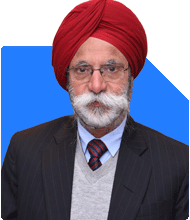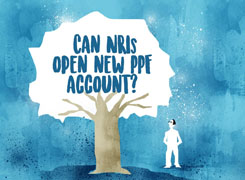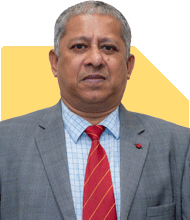45 year old seeking advice on Retirement Planning: Are these the right Mutual Funds?
Ramalingam Kalirajan |9727 Answers |Ask -Follow
Mutual Funds, Financial Planning Expert - Answered on Oct 11, 2024
He has an MBA in finance from the University of Madras and is a certified financial planner.
He is the director and chief financial planner at Holistic Investment, a Chennai-based firm that offers financial planning and wealth management advice.... more

Hi experts, I'm 45 years and starting my MF investment journey, I've selected the below MFs to invest in from a view for my Retirement Planning, If I intend to build a corpus of 5 Cr by 60 yrs, are these the right MFs to go with, or do you suggest swapping these for any better ones, kindly suggest. Also how much amount should I invest lumpsum and via SIPs in these? Thank You !! HDFC Retirement Savings Fund - Equity Plan - G 15yrs(lockin 5 years) Edelwiess Mid Cap Fund - G 12 yrs DSP Health Care Fund - G 10 yrs Bandhan Nifty Alpha 50 Index Fund - G 8 yrs ICICI Pru. Equity & Debt Fund - G - 6 yrs Kotak Low Duration 2 yrs
Mutual Fund Selection Review
HDFC Retirement Savings Fund - Equity Plan - G (15 years with a 5-year lock-in)
You have chosen a retirement savings fund with an equity plan. While equity-focused funds are good for long-term growth, having a 5-year lock-in could restrict your ability to make timely adjustments.
Actively managed equity funds tend to perform better compared to index funds like Nifty Alpha. A Certified Financial Planner would typically suggest reviewing the overall portfolio performance frequently to ensure alignment with your goals.
Retirement funds with a lock-in period are less flexible. You might need more flexibility as you approach retirement to rebalance your portfolio.
Consider replacing this with an actively managed diversified equity fund. This will give better flexibility and professional management oversight.
Edelweiss Mid Cap Fund - G (12 years)
Mid-cap funds are great for higher returns, but they also come with higher risks. They can be volatile over the short to medium term. However, given your 12-year horizon, they could add value to your portfolio.
Actively managed mid-cap funds perform better over time, and choosing regular plans through a Certified Financial Planner will give you access to professional guidance. This ensures timely corrections based on market conditions.
It’s essential to keep an eye on market cycles. Mid-cap funds may take longer to recover during downturns, but an experienced professional managing your funds will handle that well.
DSP Health Care Fund - G (10 years)
Sectoral funds, like healthcare funds, tend to be highly volatile and depend on the performance of one specific sector. While the healthcare sector has growth potential, this should not form a large part of your portfolio.
Sectoral funds should be considered as satellite investments, not core. Your core investment should focus on diversified equity funds.
Consider replacing this with a more diversified equity fund or even a flexi-cap fund for better balance. These funds are actively managed to adjust to market conditions and diversify risk.
Bandhan Nifty Alpha 50 Index Fund - G (8 years)
Index funds like the Nifty Alpha 50 Fund often lack the agility of actively managed funds. Their returns are capped to the performance of the index, and they may underperform in market downturns.
Actively managed funds with a strong track record can outperform index funds, especially in the Indian market, where active fund managers can capitalize on market inefficiencies.
Avoid index funds if you are looking for superior long-term performance. Actively managed funds are better suited to deliver higher returns over your investment horizon.
ICICI Prudential Equity & Debt Fund - G (6 years)
Hybrid funds like the ICICI Prudential Equity & Debt Fund offer a mix of equity and debt. These are suitable for moderate-risk investors, providing both growth and safety.
Over a 6-year period, this fund may offer stability, but for your long-term retirement goal, you may want to focus more on equity for higher returns.
You can keep a small portion of your portfolio in such funds for stability, but the majority should still be in equity to meet your Rs 5 crore goal.
Kotak Low Duration Fund (2 years)
A low-duration fund is designed for short-term goals, not long-term retirement planning. It offers stability but minimal growth.
This fund is not aligned with your 15-year goal. Instead, consider shifting this allocation to equity-focused funds for better growth over the long term.
Low-duration funds are ideal for emergency funds, not for retirement planning.
Disadvantages of Index Funds
Index funds like the Bandhan Nifty Alpha 50 only track a specific index. This limits their growth potential compared to actively managed funds.
During market downturns, index funds cannot protect or manage risks. Actively managed funds, however, can strategically adjust portfolios to safeguard investors.
Actively managed funds can capitalize on market inefficiencies. This is why Certified Financial Planners prefer them, especially in emerging markets like India.
SIP vs Lumpsum Investments
SIP (Systematic Investment Plan): It allows you to invest consistently over time. This strategy helps you take advantage of market volatility by averaging the cost of buying units. For long-term goals like retirement, SIP is highly recommended.
Lumpsum Investment: This is suitable when you expect markets to rise consistently over time. However, markets fluctuate, and timing a lumpsum investment can be tricky. SIPs help avoid the risk of investing at the wrong time.
Given your 15-year horizon, a combination of SIP and a small lump sum could work well. SIPs provide discipline, while a lumpsum in the right equity funds could jumpstart your investments.
Amount to Invest
You are aiming for Rs 5 crore by the time you retire. To achieve this, you will need to consistently invest a significant amount each month. Start with a monthly SIP that aligns with your disposable income.
A Certified Financial Planner can help calculate the exact amount based on expected market returns, inflation, and risk tolerance. However, for now, focus on maintaining a steady investment habit.
Other Investment Strategies
Diversification: It’s essential to have a well-diversified portfolio across asset classes and sectors. Avoid putting too much into sectoral or index funds, as they increase risk without necessarily improving returns.
Asset Allocation: Keep the majority of your portfolio in equity funds for growth. As you near retirement, you can gradually shift to debt funds for stability and lower risk.
Reviewing Regularly: Your portfolio should be reviewed at least once a year. Market conditions change, and so do your financial goals. Actively managed funds, when handled by a professional, will be adjusted accordingly.
Certified Financial Planner’s Role: Having a Certified Financial Planner to guide your investments ensures that your portfolio stays on track. They monitor your funds, suggest corrections, and ensure that your investments are aligned with your long-term goals.
Tax Implications
Equity Funds: Gains from equity mutual funds are taxed differently based on the duration of your holding. Long-term capital gains (LTCG) above Rs 1.25 lakh are taxed at 12.5%. Short-term capital gains (STCG) are taxed at 20%.
Debt Funds: If you invest in debt funds, remember that both LTCG and STCG are taxed as per your income tax slab. This could have a significant impact on your post-tax returns.
Final Insights
You are on the right track by focusing on mutual funds for retirement. However, I suggest shifting some of your current choices to more actively managed funds with a diversified approach.
Avoid sectoral and index funds as core investments. Focus on growth through equity funds, balancing risk with time and diversification.
SIPs are ideal for your long-term goal. Start with an amount that fits your financial capacity and review your progress regularly.
Consider working with a Certified Financial Planner to stay on track. They will ensure that your portfolio adapts to market conditions and your changing needs over time.
Best Regards,
K. Ramalingam, MBA, CFP,
Chief Financial Planner,
www.holisticinvestment.in
https://www.youtube.com/@HolisticInvestment
You may like to see similar questions and answers below
Sanjeev Govila | Answer |Ask -Follow
Financial Planner - Answered on Jul 23, 2023
Sanjeev Govila | Answer |Ask -Follow
Financial Planner - Answered on Mar 28, 2024
Ramalingam Kalirajan |9727 Answers |Ask -Follow
Mutual Funds, Financial Planning Expert - Answered on Oct 11, 2024
Ramalingam Kalirajan |9727 Answers |Ask -Follow
Mutual Funds, Financial Planning Expert - Answered on Jul 14, 2025
Ramalingam Kalirajan |9727 Answers |Ask -Follow
Mutual Funds, Financial Planning Expert - Answered on Jul 14, 2025
Ramalingam Kalirajan |9727 Answers |Ask -Follow
Mutual Funds, Financial Planning Expert - Answered on Jul 14, 2025
Ramalingam Kalirajan |9727 Answers |Ask -Follow
Mutual Funds, Financial Planning Expert - Answered on Jul 14, 2025
T S Khurana |492 Answers |Ask -Follow
Tax Expert - Answered on Jul 14, 2025
T S Khurana |492 Answers |Ask -Follow
Tax Expert - Answered on Jul 14, 2025
Prof Suvasish Mukhopadhyay |2599 Answers |Ask -Follow
Career Counsellor - Answered on Jul 14, 2025
Prof Suvasish Mukhopadhyay |2599 Answers |Ask -Follow
Career Counsellor - Answered on Jul 14, 2025
Prof Suvasish Mukhopadhyay |2599 Answers |Ask -Follow
Career Counsellor - Answered on Jul 14, 2025
Prof Suvasish Mukhopadhyay |2599 Answers |Ask -Follow
Career Counsellor - Answered on Jul 14, 2025














.jpg)








